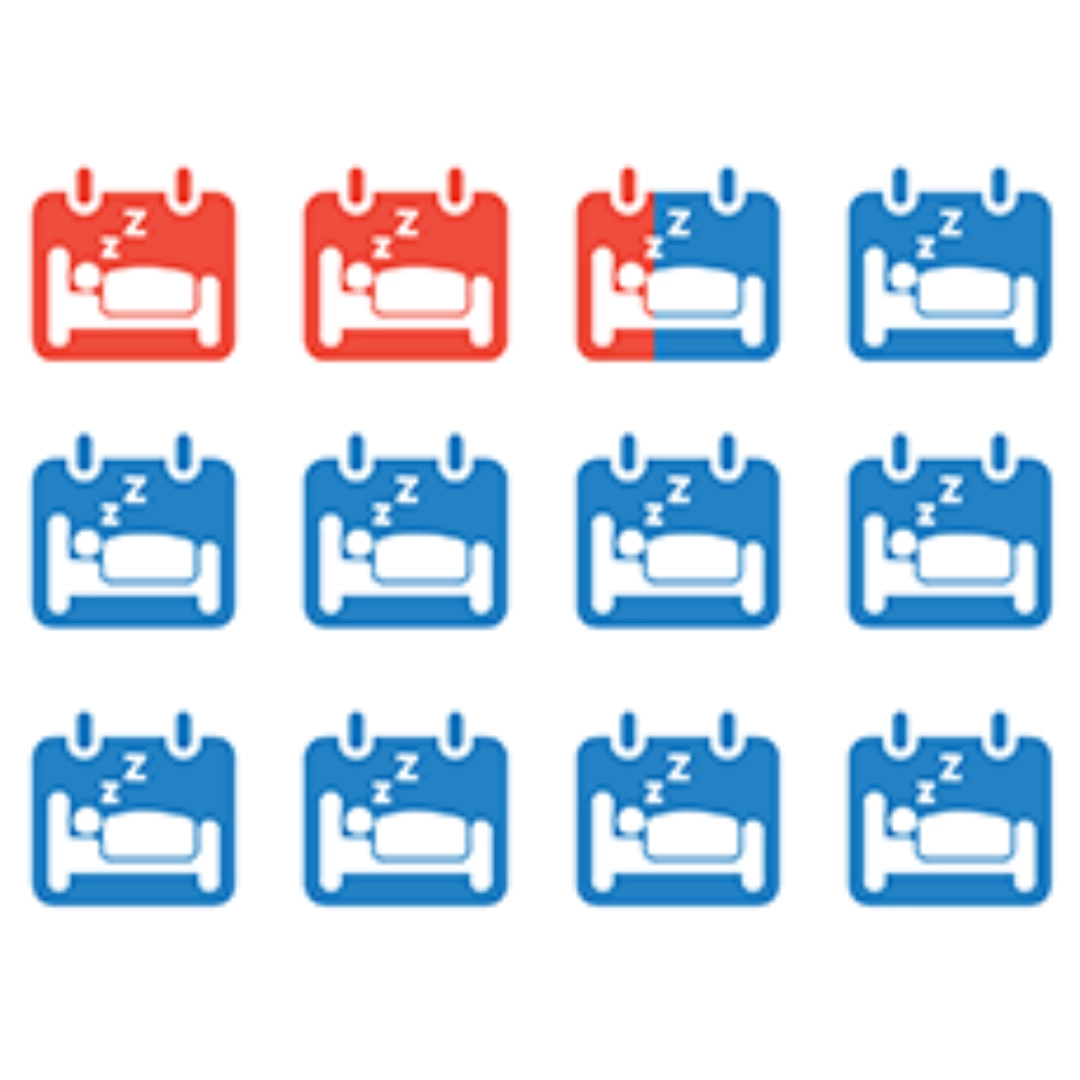Sleep and QOL: the full impact on patients coping with the burden of AD
Understanding the full scope of AD—the unseen burden on patients.

How does uncontrolled atopic dermatitis (AD) impact patients beyond the physical symptoms?
In addition to looking at clinical measures, it’s important to consider other ways AD may be impacting patients. Skin lesions and itch are just the tip of the iceberg.

86% of patients with uncontrolled moderateto- severe AD report suffering from daily itch1

Patients with moderate-to-severe AD report spending 31%-53% of the year in flare2
What burdens due to AD do your patients experience in their daily lives?
Understanding the broader consequences of uncontrolled AD and the complexity of its burden on patients’ lives is essential for comprehensive disease management.1
The itch that is common in AD can have a serious impact on both the quality and quantity of sleep a patient gets. Because of this, the time patients spend sleeping is an important sign of how AD is affecting them.3,4

In a survey that included over 2000 patients with AD, reported moderate-to-severe sleep disruption due to AD-related itch during the previous week3

Another study found that 67 nights of sleep, or over 2 months per year, can be negatively impacted by AD in adults.2
This lack of sleep can have a negative impact leading to limitations on many aspects of life, from socializing to working. Sleep disruption can often also affect partners and caregivers.2,4
The itch that is so common in AD can have a cascading effect on patients’ lives, leading to sleep disturbances that in turn impact everyday functioning, including adverse effects on participation in activities and social interactions.2-4
The burden of AD is multifaceted, impacting the skin and so much more. To improve the quality of life of patients, interventions aimed at addressing the pathophysiology of AD are vital.
-
Simpson EL et al. J Am Acad Dermatol 2016;74(3):491-498.
-
Zuberbier T et al. J Allergy Clin lmmunol 2006;118(1):226-232.
-
Silverberg JI et al. Dermatitis 2023;34(2):135-144.
-
Eczema Society of Canada. Atopic Dermatitis Quality of Life Report. June 2017. Accessed December 1, 2023. http://altogethereczema.org/images/files/ESC_QUALITY_OF_LIFE_REPORT_2017.pdf


